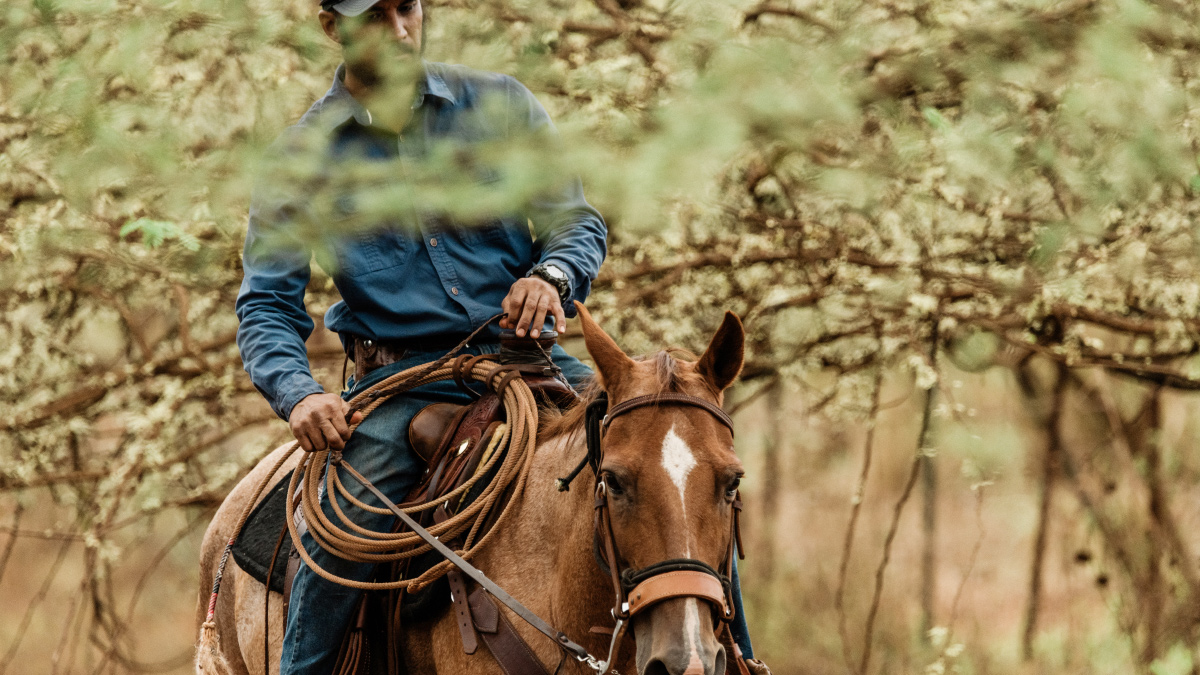Day in and day out, a Kunia rancher honors his commitment to both the land and his family.
As the late afternoon sun slips behind the Waiʻanae Mountain Range, Sheldon Sojot hoists a bucket of alfalfa over the metal railing of a horse pen. He gives Baby, his mare, a quick pat before scanning the foothills for signs of the wild horses that sometimes appear at this dusky hour.
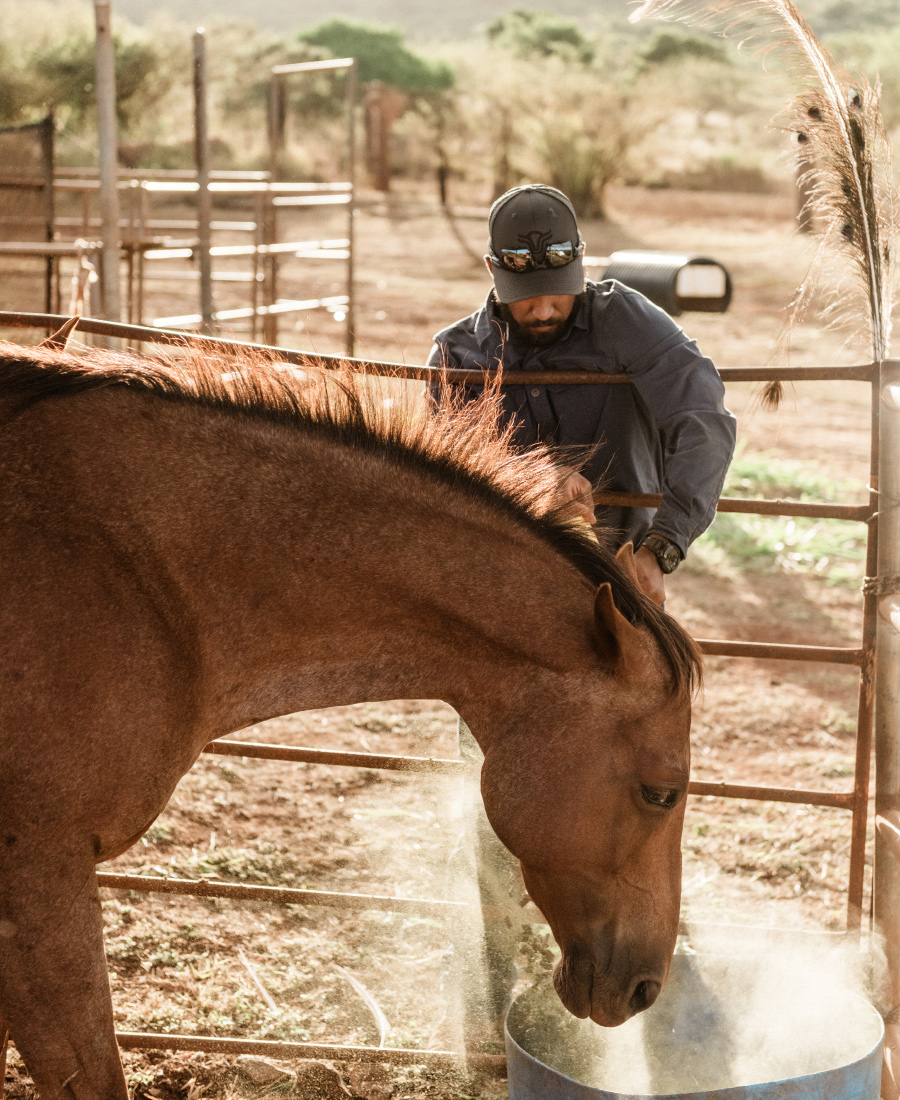
Days such as these are long for Sheldon, whose alarm rings at 4 a.m. five days a week, signaling the start of his shift as a foreman at a local plumbing company. Once he clocks out, he swaps his work attire for a pair of worn Wrangler jeans, a trucker hat, and steel-toe boots before jumping in his Chevy Silverado and heading west toward Kunia. There, hidden along the mountain’s edge is a small ranch—his second job and, in many ways, his second home.
Sheldon’s connection to the ranch began in the early ’90s. His father, Ivan, who preferred outdoor work to a conventional 9-to-5 job, would allow Sheldon to tag along to the “mountain” and help with small ranch tasks or go hunting. Sheldon, the eldest of Ivan’s three children, was the only one who showed a keen interest in ranch life. His hānai grandfather, Uncle Rodney, had taught Ivan the ins and outs of ranching and bestowed the same knowledge and training onto Sheldon too. “He called me ‘young blood,’”
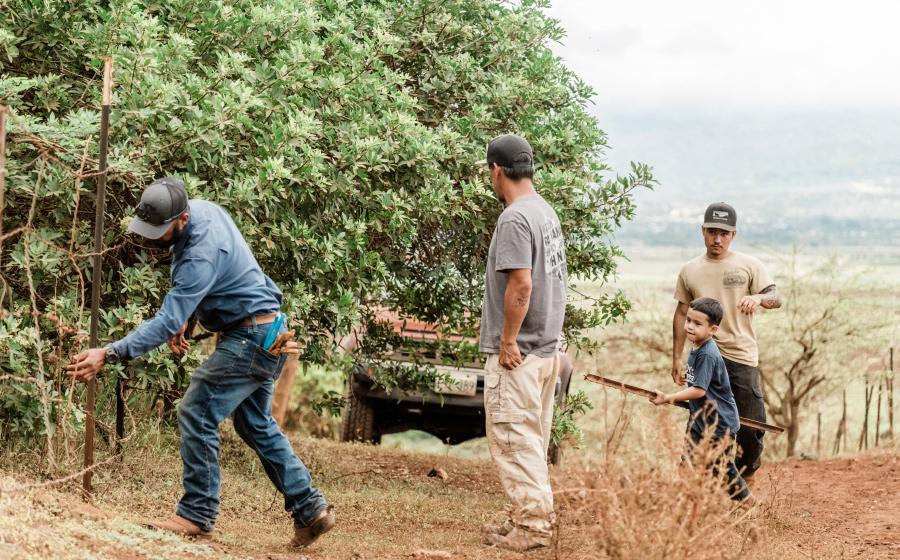
Sheldon recalls of the early years spent shadowing his father and Uncle Rodney under the hot leeward sun. Over the next decade, Sheldon learned all things ranching: running cattle and riding horses, how to wield a branding iron and post-hole digger, the best tactics in dealing with customers and, on occasion, poachers too. The tedium of dust and hard labor tarnished the initial shine of fun and adventure at the ranch. By the time he graduated high school, Sheldon was spending less and less time there, eventually becoming a full-time plumber and raising his own family.
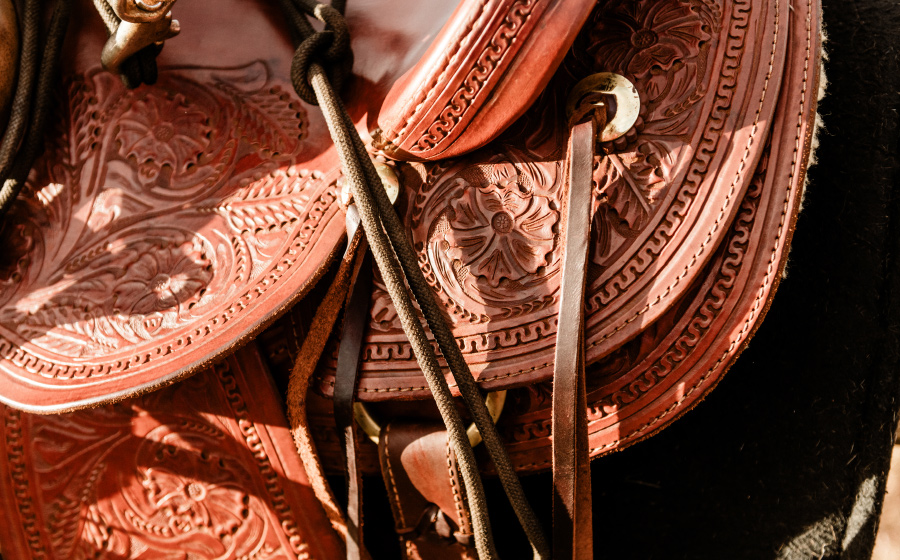
When Uncle Rodney died, Ivan took charge of the ranch alone, and Sheldon’s visits remained infrequent—usually only when his father needed help. Then, in the summer of 2020, Ivan passed. As the family grieved their patriarch, the question of caretaking the ranch arose: would Sheldon, like his father before him, answer the mountain’s call? The impending mantle loomed heavy.
While the romantic notion of ranch life appeals to outsiders, Sheldon knew the reality was far less glamorous and far more gritty. Ranch life is a hard life, and unlikely to bring any financial gain. “No one does this for the money,” he says.
During his father’s life, friends and relatives of the family would often ask, “Where’s Ivan?” The answer was always the same—on the mountain. The implication was clear: Ranch life requires commitment, sacrifice, and long hours away from loved ones. There were late-night phone calls from neighbors reporting loose cattle or a broken waterline needing immediate repair, along with so many missed birthday parties and family gatherings, all because the mountain called.
Despite his initial reservations and the ongoing stress of managing the ranch, Sheldon has embraced his decision to honor his father’s legacy. On O‘ahu, the number of ranches has declined in the last 100 years as more agricultural land succumbs to urban sprawl and gentrification. “I’m lucky, not many people get to experience this,” Sheldon says, gesturing to the ranch’s vast swaths of land clear of any buildings and highways. “If you stand on the ridge, you can see all the way down to Diamond Head.”
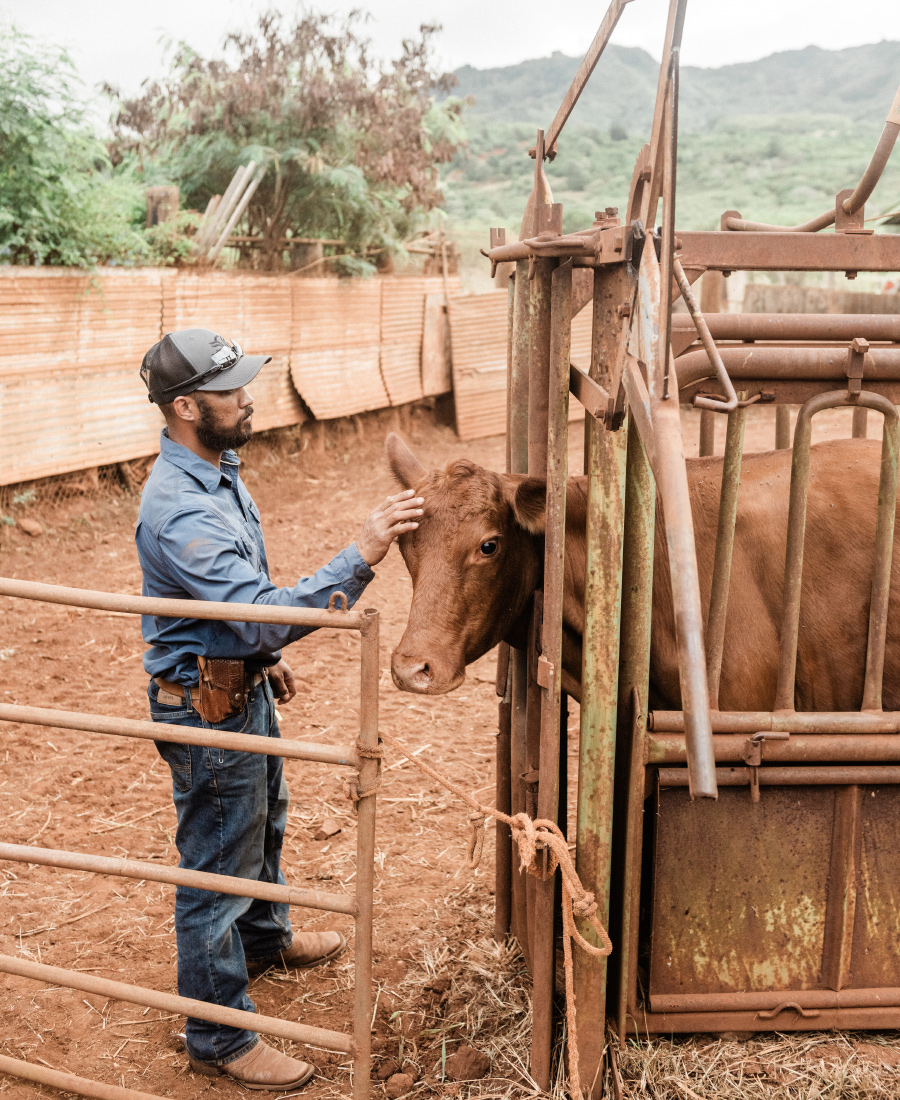
When asked about Ivan, Sheldon’s eyes glisten, and he clears his throat. Like his father, he is a man of few words, and it’s hard for him to express the gravity of his father’s absence. Instead, he offers small details—how much his father loved waiting for the wild horses to come down from the mountain each evening, his joy in seeing a new calf appear in the herd, the rare instances he would indulge in some fun on the ranch and fly kites, his exceptionally close bond with his grandson Ikaika, Sheldon’s son, whom he would bring to the ranch regularly.
Day in and day out, Sheldon tackles the ranch’s perpetual to-do list. He checks the water tank and feeds the animals, fixes dirt roads after heavy rains. Some days bring excitement with cattle branding and butchering, while other days are dedicated to repairing fence lines. The cattle graze across the valleys and flatlands, at times oblivious to the barbed wire meant to contain them. They prod and nudge against the fence line until something breaks, creating an opening for others to escape. Sheldon must first wrangle the errant cows and then locate the area needing repair. With nearly 500 acres to canvas, it’s a tall order, with much of it done in solitude and on horseback. It’s quiet moments like these that affirm his choice to continue his father’s legacy, when he recognizes the ranch as not just a responsibility but a refuge—a space for one’s spirit to breathe deeply and feel free. “It’s just peaceful,” Sheldon says. “I could never get lost on the mountain.”
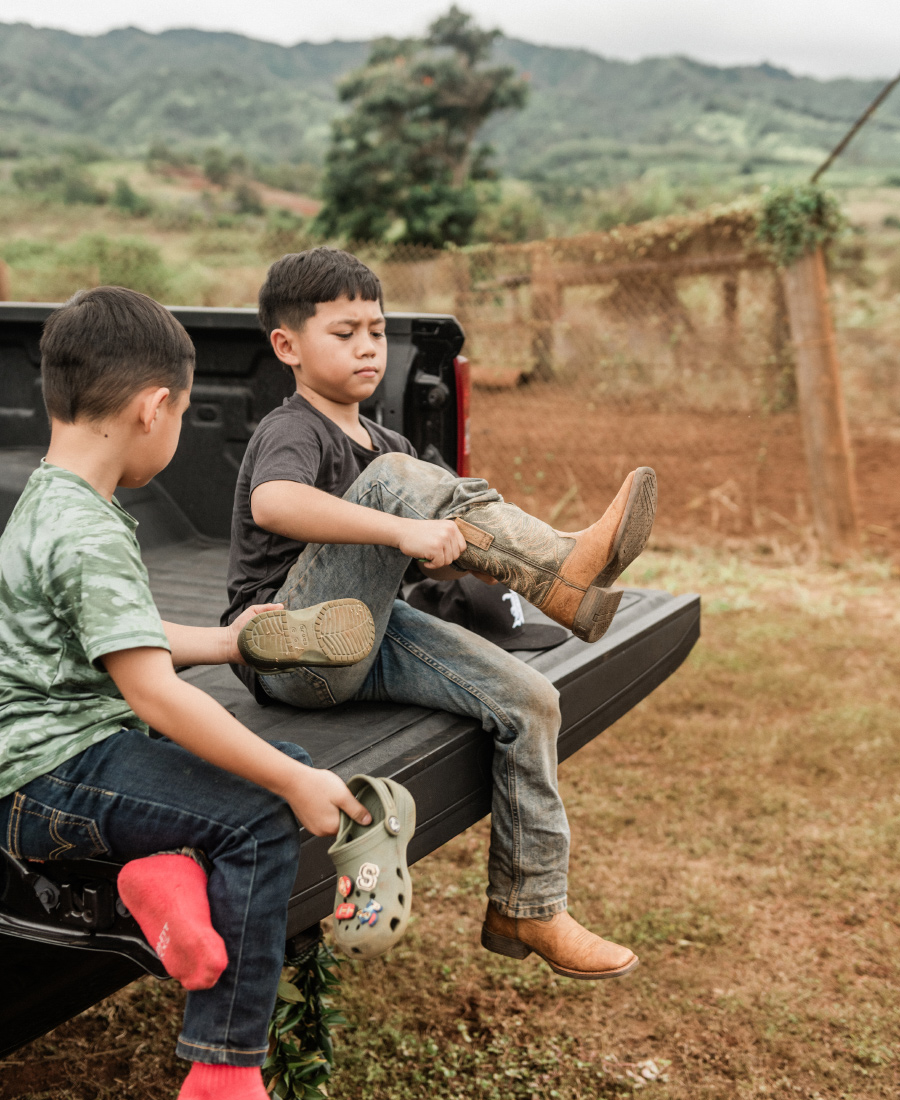
Dusk spreads over the lowlands, adding a blurred softness to the pitch and yaw of the terrain. On the upper slopes, the forest appears as a dark green smudge. The land soon quiets into the long stillness of night. Some 12 miles away, Sheldon lies in bed, setting his alarm for another early start. As sleep approaches, his thoughts drift to the ranch, to the mountain. To his father too. Under a black velvet sky, the cattle have finished drinking from the water trough, settling themselves amid the haole koa and California grass. They low softly. Higher up, unseen, the wild horses nicker among the ‘ōhi‘a lehua and naio. The cool air rises, and all feels right.
